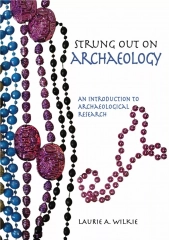
Advanced Databases Module Overview with Dr. Nicholas Gibbins
Explore COMP3211 Advanced Databases module with Dr. Nicholas Gibbins to gain insights into database management systems, software development, and DBMS types. Enhance your understanding of data storage, access, and optimizations. Prerequisites include COMP1204 concepts. Join online lectures for a comprehensive learning experience.
Download Presentation

Please find below an Image/Link to download the presentation.
The content on the website is provided AS IS for your information and personal use only. It may not be sold, licensed, or shared on other websites without obtaining consent from the author. Download presentation by click this link. If you encounter any issues during the download, it is possible that the publisher has removed the file from their server.
E N D
Presentation Transcript
Introduction COMP3211 Advanced Databases Dr Nicholas Gibbins - nmg@ecs.soton.ac.uk
Lecturers Dr Nicholas Gibbins nmg@ecs.soton.ac.uk Dr George Konstantinidis g.konstantinidis@soton.ac.uk 3
Module Aims and Objectives Gain a better understanding of the nature of data Understand the issues to be addressed in writing database software Understand the variety of approaches taken so far Be able to select an appropriate database for an application Be aware of the latest developments in the use and application of databases 4
Learning Outcomes You will be able to demonstrate knowledge and understanding of: The internals of a database management system The issues involved in developing database management software The variety of available DBMS types and the circumstances in which they're appropriate 5
Learning Outcomes You will be able to: Choose appropriate approaches for data storage and access Demonstrate how a DBMS processes, optimises and executes a query Identify issues arising from concurrent or distributed processing and select appropriate approaches to mitigate those issues Select an appropriate DBMS for an application Implement components of a DBMS 6
Prerequisites: COMP1204 The role of database systems in information management The concept of data modelling Entity-Relationship modelling The relational model and other models SQL Database management issues 7
COMP3211 vs COMP1204 In COMP1204, you learned how to build databases In COMP3211, you will learn how to build database management systems 8
Course Structure Three lectures per week: Monday 1700 Tuesday 1500 Wednesday 1200 All lectures will be online in Blackboard Collaborate; specific sessions have been set up for each lecture. 9
Assessment 75% examination (120 minutes, 3 questions from 5) 25% coursework (due Wednesday 14 April) 10
Books Core Text Garcia-Molina H., Ullman J.D. and Widom J., Database Systems: The Complete Book, 2nd ed., Pearson, 2009. Parts IV and V are the basis of this module Background Texts Elmasri R. and Navathe S.B., Fundamentals of Database Systems, 6th ed., Addison-Wesley, 2010. Connolly T. and Begg C., Database Systems, 5th ed., Addison-Wesley, 2009. Date C.J., An Introduction to Database Systems, 8th ed., Pearson, 2004. 11
What is a Database? Represents some aspect of the real world A logically coherent collection of data with some inherent meaning Designed, built and populated with data for a specific purpose Has an intended group of users and some preconceived applications in which these users are interested 13
Database System vs. DBMS Database System Application programs DBMS Software to process queries Software to access stored data Metadata Stored Data 14
Database Management System A DBMS is a set of general purpose software, that allows the user to:- Define the database Specifying the data types, structures and constraints for the data to be stored Construct the database Store the data on some storage medium that is controlled by the DBMS Manipulate the database Querying to retrieve specific data, updating to reflect changes in the model of the real world, and generating reports from the data 15
What should the DBMS do? Store data (!) Control or eliminate redundancy Promote program-data independence Permit multiple views of the data Support sharing by multiple users Support sharing and integration of data between multiple applications Control concurrent access to data 16
What should the DBMS do? Offer various interfaces for data retrieval and manipulation Be self-describing / contain its own catalogue for metadata Support data abstraction Allow complex relationships between objects to be represented Enforce integrity constraints on the data Restrict unauthorised access Facilitate backup and recovery 17
Datatypes How does the type of data affect what we can do with it? How do we model: Temporal data? Spatial data? Multimedia data? 19
DBMS Architecture What are the functional units within a DBMS? DDL Privileged Commands Interactive Query Application Programs Statements DDL Compiler Query Compiler Precompiler Query Optimiser DML Compiler Runtime DB Processor System Catalogue Stored Data Manager Stored Database 20
Data Storage How does a DBMS organise data: On disc? In records? In fields? 21
Access Structures 10 60 110 ... ... 10 20 30 40 50 20 40 How can we improve the speed of access to data in a DBMS? 10 80 Indexes, hash tables, B-trees 70 50 60 70 80 90 100 60 100 90 120 110 120 ... ... ... 110 30 22
Multidimensional Access Structures How do we improve the speed of access to multidimensional data in a DBMS? 23
Query Processing and Optimisation LNAME How are queries executed in a DBMS? How can we modify queries to reduce their execution time? ESSN=SSN ESSN SSN,LNAME BDATE > 1957-12-31 PNUMBER=PNO EMPLOYEE PNUMBER ESSN,PNO WORKS_ON PNAME= Aquarius PROJECT 24
Transactions and Concurrency How do we provide users with concurrent access to a DBMS? READ, WRITE Partially Committed Active Committed What problems can arise? BEGIN TRANSACTION END TRANSACTION COMMIT How can we prevent or mitigate those problems? ABORT ABORT Failed Terminated 25
Parallel Databases How can we distribute a DBMS across the machines in a cluster? P P P How does parallelism affect: Query processing? Deadlock detection? Reliability? M M M 26
Distributed Databases How can we distribute a DBMS across a WAN? How does distribution affect: Query processing? Concurrency control? Reliability? R3 S R5 S 27
Information Retrieval How do we support queries over free text data? query How do we evaluate the effectiveness of an IR engine? query parsing document collection retrieval and ranking indexer index answer set 28
Message Queues How can we use asynchronous communications for reliable distributed DB applications? Client Server dequeue enqueue message queue Client Server 29
Stream Processing How can we query data when there s more data than we can store? input stream input stream output stream 30
Data Warehousing How can we best support the analysis of complex, multidimensional data? OLAP vs OLTP W S N Juice 10 50 Cola Product Milk 20 Cream 12 Toothpaste 15 Soap 10 1 2 3 4 5 6 Month 31
Non-Relational Databases What s out there apart from RDBMS? Hierarchical, XML Network, Object Graph NoSQL 32
Next Lecture: Data Types




